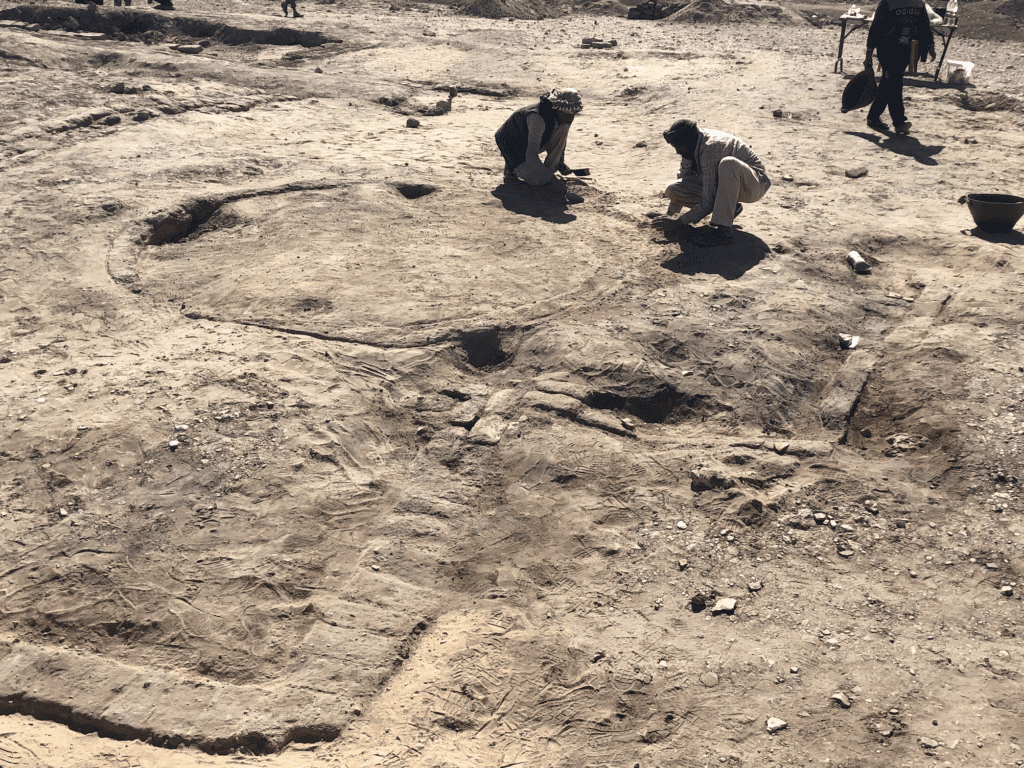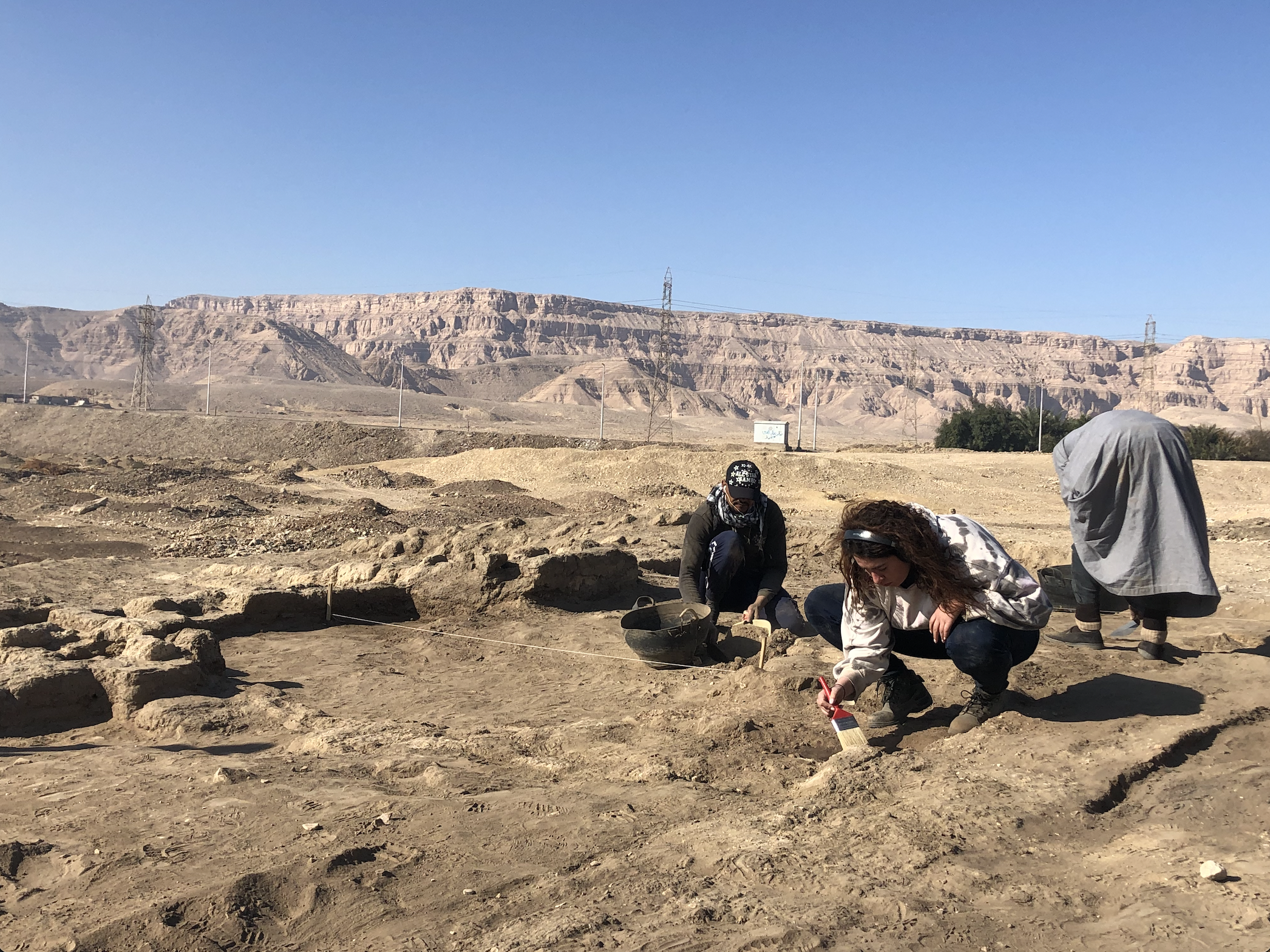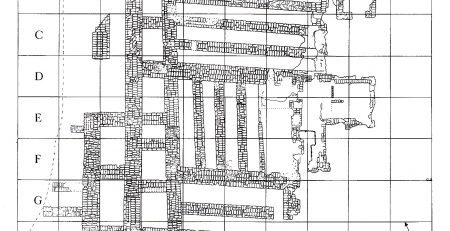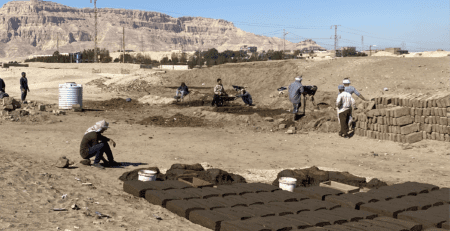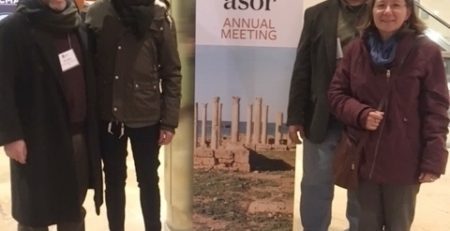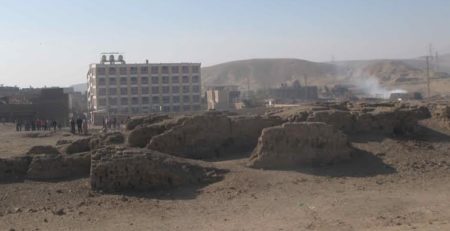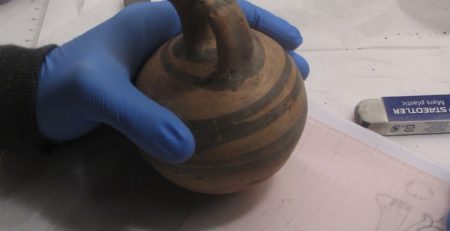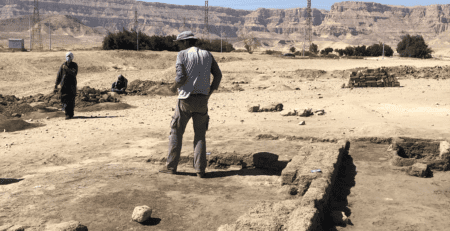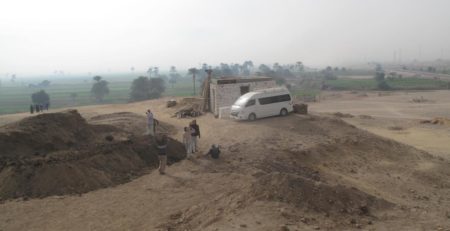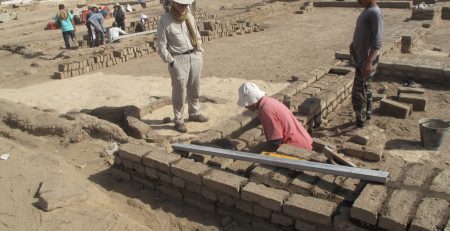Deir el-Ballas 2022, Week 2: 1/15-1/20
Work is progressing nicely at Deir el-Ballas, as we continue our conservation and excavation efforts at the site. This week we were joined by two more expedition members, Sara Ahmed Abdelaziz and Hassan Elzawy, who are working with the team at the North Palace and North Suburb. At the South Palace, the restoration work is almost complete. We are finishing the stairway inner wall and next will cover the stairs with a protective layer of mesh, sand, and mud. We have also started back on the restoration of the casemates in the North Palace. In the South Wadi, Piet Collet surveyed in Areas 1 and 3, both of which contain mudbrick structures that are ephemeral and threatened by encroachment from the modern village and pottery workshops. While no excavation work is planned in this area this season, it is important for the expedition to map and plan these structures properly for future archaeological investigation.
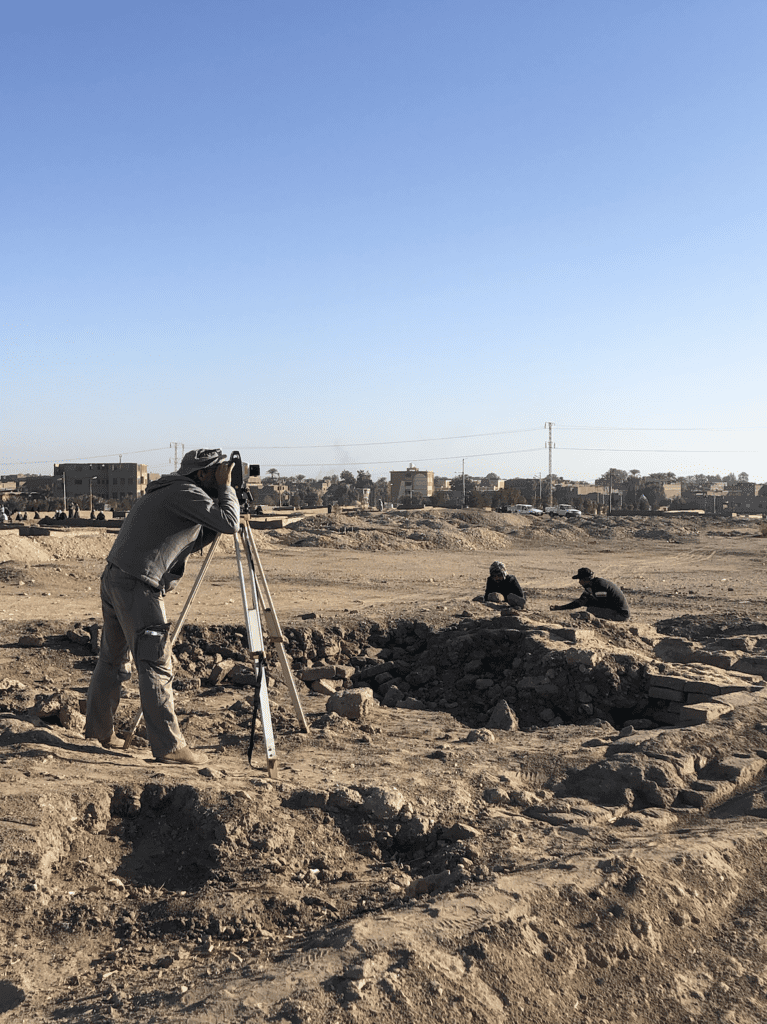
Meanwhile, work started up again at the North Palace, where a team of local Egyptian mudbrick layers continued to cap the existing casemates with modern mudbrick, in order to better protect them from modern interventions and deterioration. Hassan Elzawy supervised the restoration efforts and the excavation work at the North Palace to find foundations of further casemates.
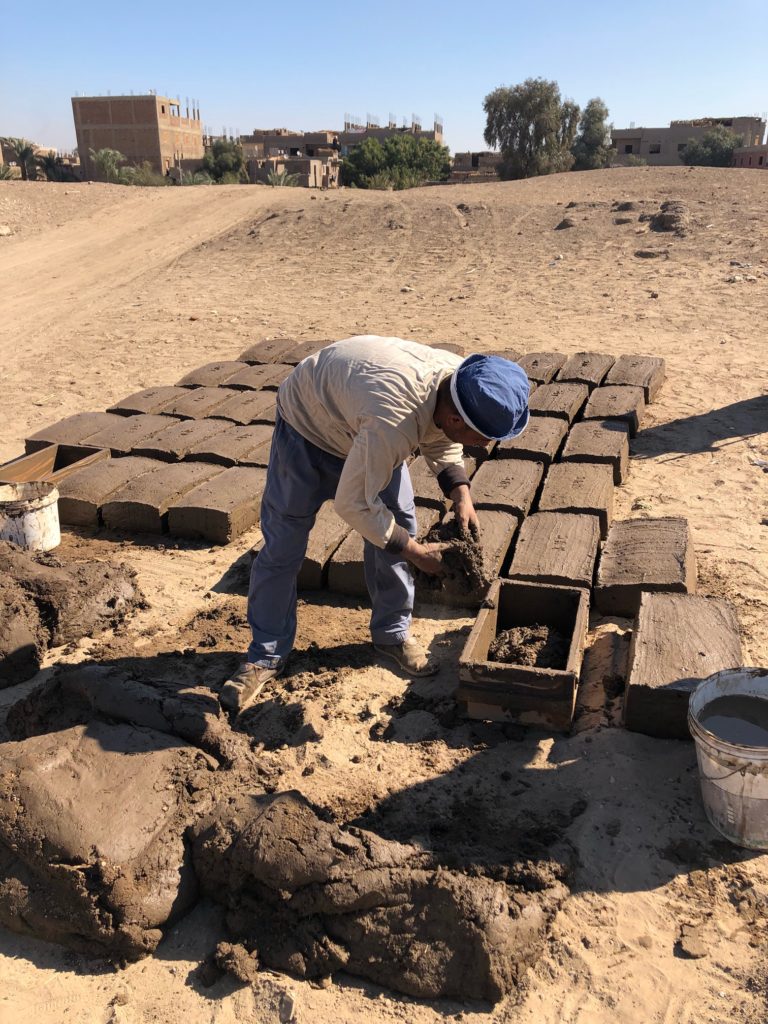
Work in the North Suburb continued at House E, where Nicholas Brown concentrated efforts on finishing the excavation of Room 5- the textile workshop. The team discovered two additional square, mudbrick installations along the west side of this room that were used to burn rubbish, as so far determined by their excavation. Additionally, another team focused their efforts on exploring the enigmatic W2 “corridor” of the house- to try to better understand how this space relates to the overall House E structure.
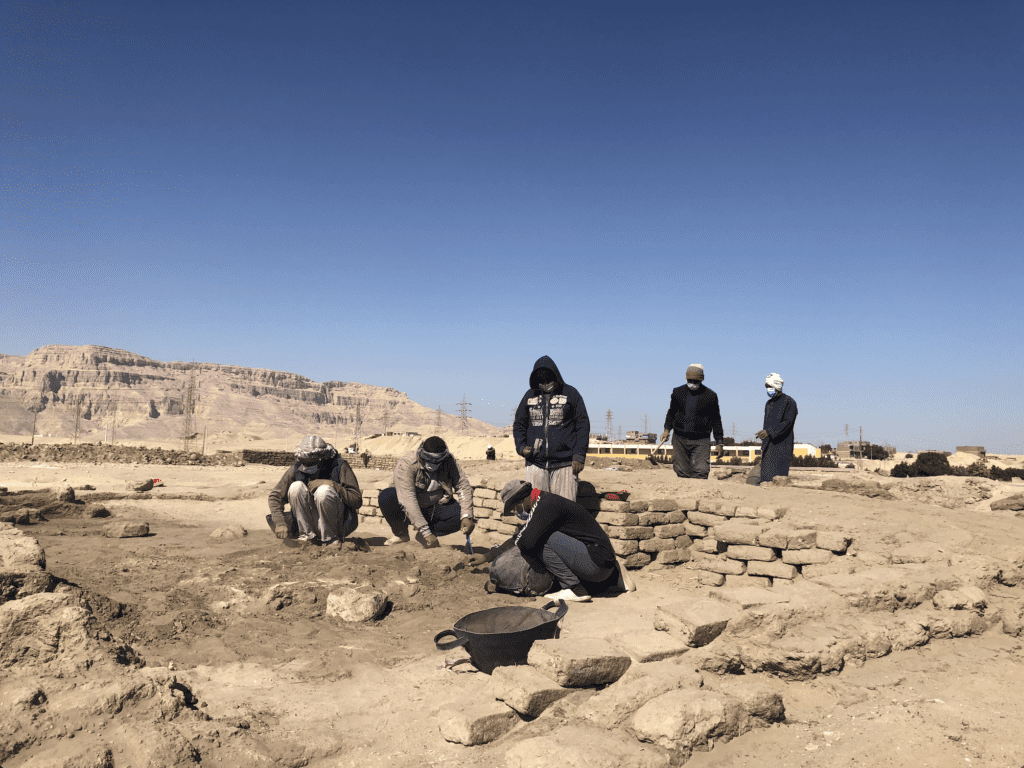
Finally, Ellen Morris and Sara Ahmed Abdelaziz began excavation work in House F, a structure that lies 32.5 meters southeast of House E in the North Suburb. This is the structure where the expedition discovered the hundreds of mud “eggs” back in the 2019-2020 season (quite possibly seal blanks for administrative purposes in the area). As so far revealed by their excavation work this season, the house has many in-situ deposits of archaeological materials and many small finds (such as beads, needles, and grinding stones). The team is excited to continue exploring this structure and to learn more about the lives of its occupants during the occupation of Deir el-Ballas in the Second Intermediate Period.
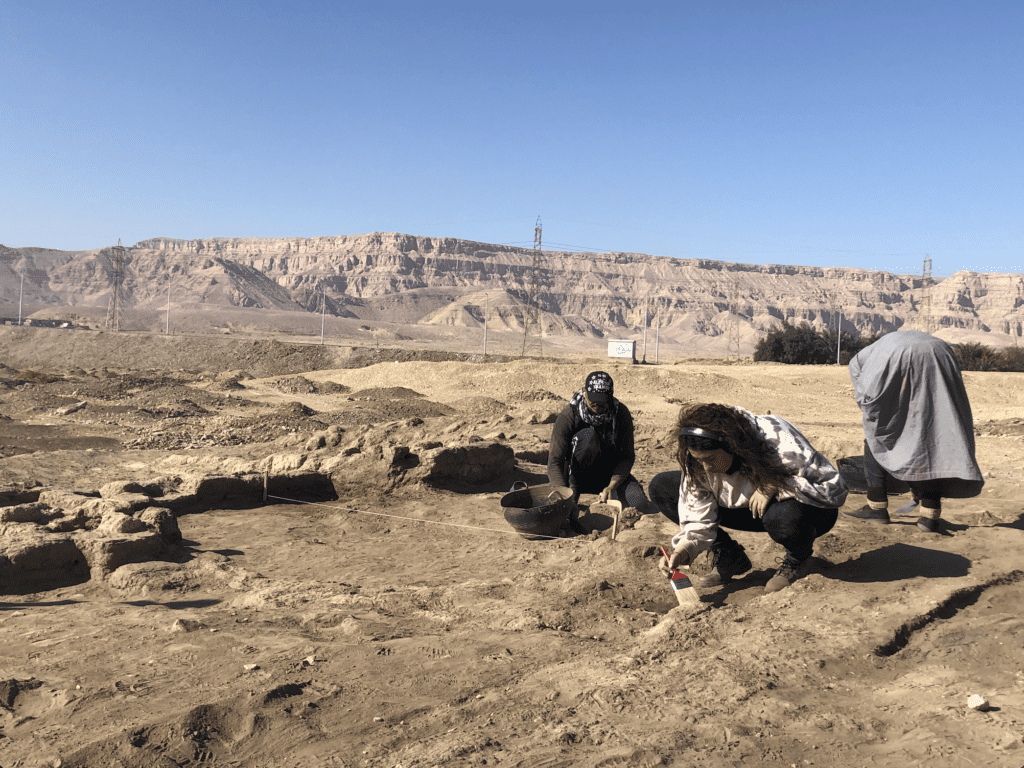
Deir el-Ballas 2022, Week 2 Supplement
by Nicholas R. Brown
House E West- New Discoveries and Salvage Efforts
One of the objectives of the 2022 Deir el-Ballas Expedition is to continue our archaeological investigations of House E West, an open courtyard area directly west of House E that contains evidence of home industry and craft production. Our goals for investigating this area include determining the relationship of this space to the house, figuring out its function in antiquity, properly mapping in the area, and finally beginning conservation and salvage efforts to better protect it from modern interventions.
Previously, House E West was briefly noted and mapped during the 1980’s excavations at the site by Peter Lacovara and Cynthia Schartzer. At that time, all that was known about the area were the two mudbrick walls that ran west away from Room 4 and the W2 corridor, along with the eastern halves of two round mudbrick installations (Figure 1). Our excavations in the area during the 2019 season, led by Victoria Jensen, revealed the presence of an additional circular mudbrick installation along with extensive deposits of ash and agate bead production towards the south (Figure 2).
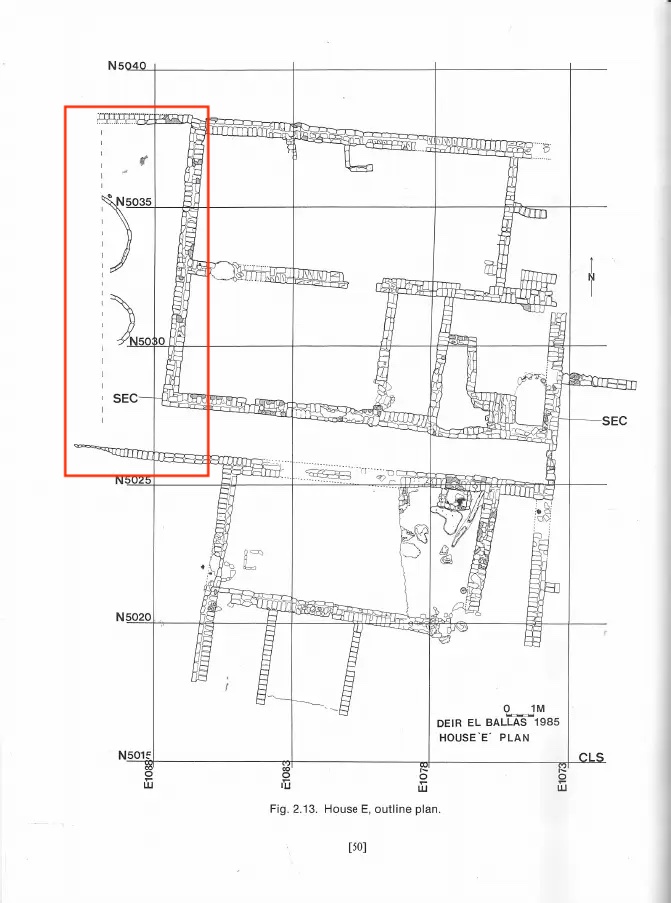
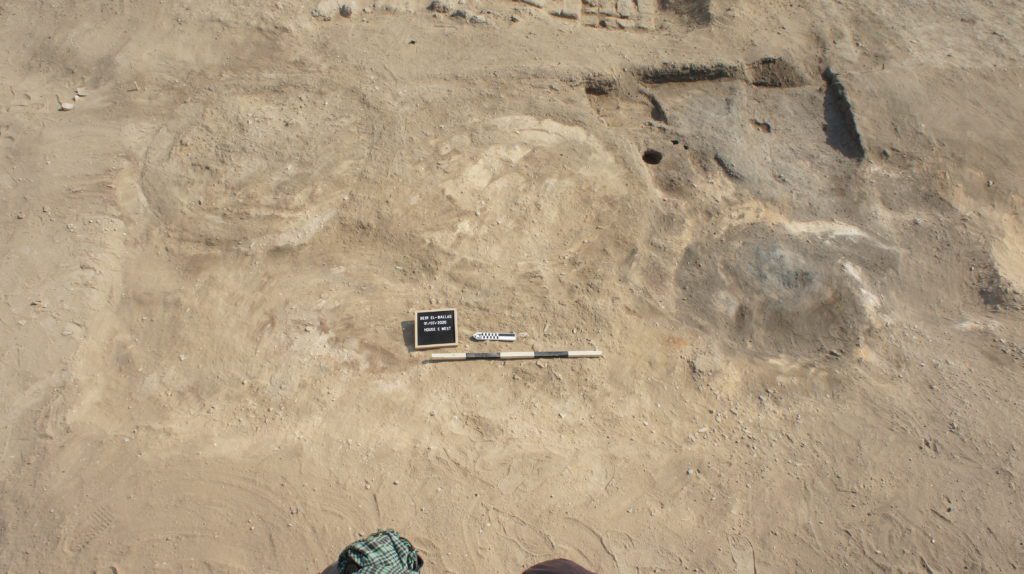
Initially, our thought was that most of the northern-most wall of House E West was lost since it ran under the modern road that cut through the site between Houses D and E. Therefore, we asked the team to clear the surface deposit in the area to see how much of the wall was left, if at all, so we could get it remapped and noted before the end of this season. However, much to our surprise, the entire wall was still present but had been worn down to no more than 2-3 millimeters thick in most places under the modern road. Because of the sensitive nature of these archaeological remains, it was deemed necessary to have two roadblocks built in order to better protect these fragile archaeological remains (Figure 3). The continued investigation of this wall this season revealed more than was ever planned back in the 1980s, which helps us to better understand that this courtyard area of House E West was originally delineated by a mudbrick wall to the north and west.
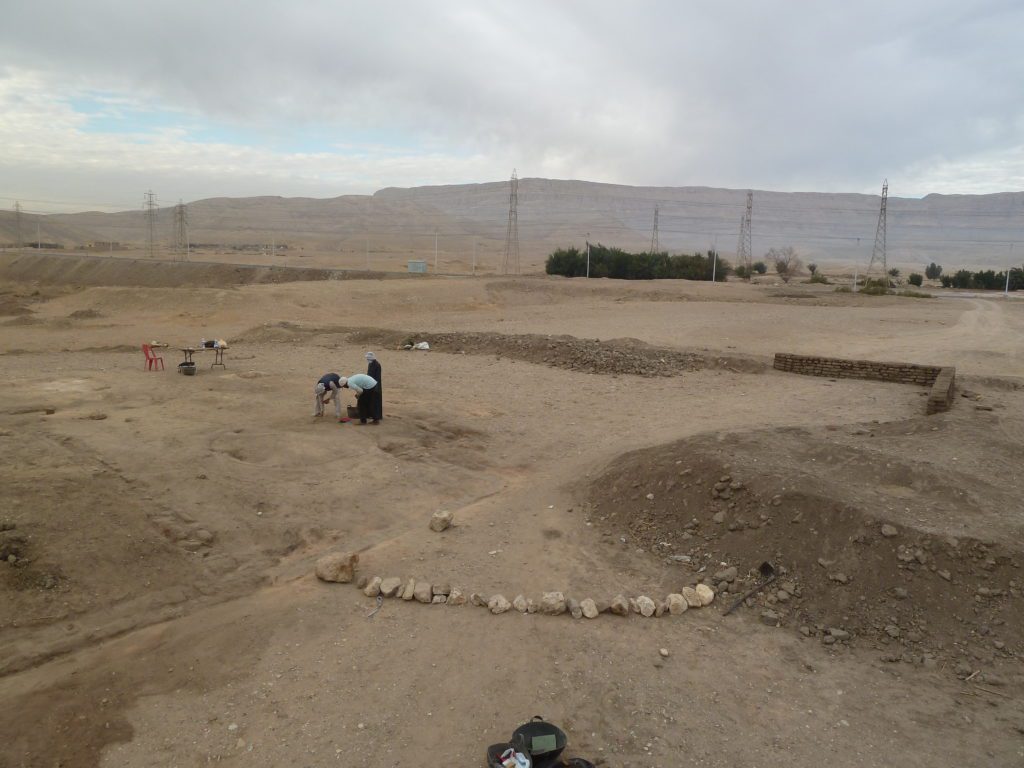
In addition to the newly discovered extensions of this wall, the team also investigated the remains of the northern-most circular mudbrick installation (see Figure 1). The area around the feature at the start of this season had three looters’ pits dug into it. From one of these we were able to determine that the remains of the installation were at least three courses of mudbricks deep. Additionally, the two other pits helped me determine the approximate extent of this feature, which we believed was necessary to get a proper map and record of. After our initial surface cleaning, we revealed that the feature is the largest of our three mudbrick circular installations within the area (Figure 4). The exact function and purpose of these three mudbrick installations is unknown to us at this time: our working hypothesis is that these were three silos for storing grain or food. Only continued archaeological excavation of them, with botanical and pottery samples collected, will help us to better understand the role of these installations in House E West.
